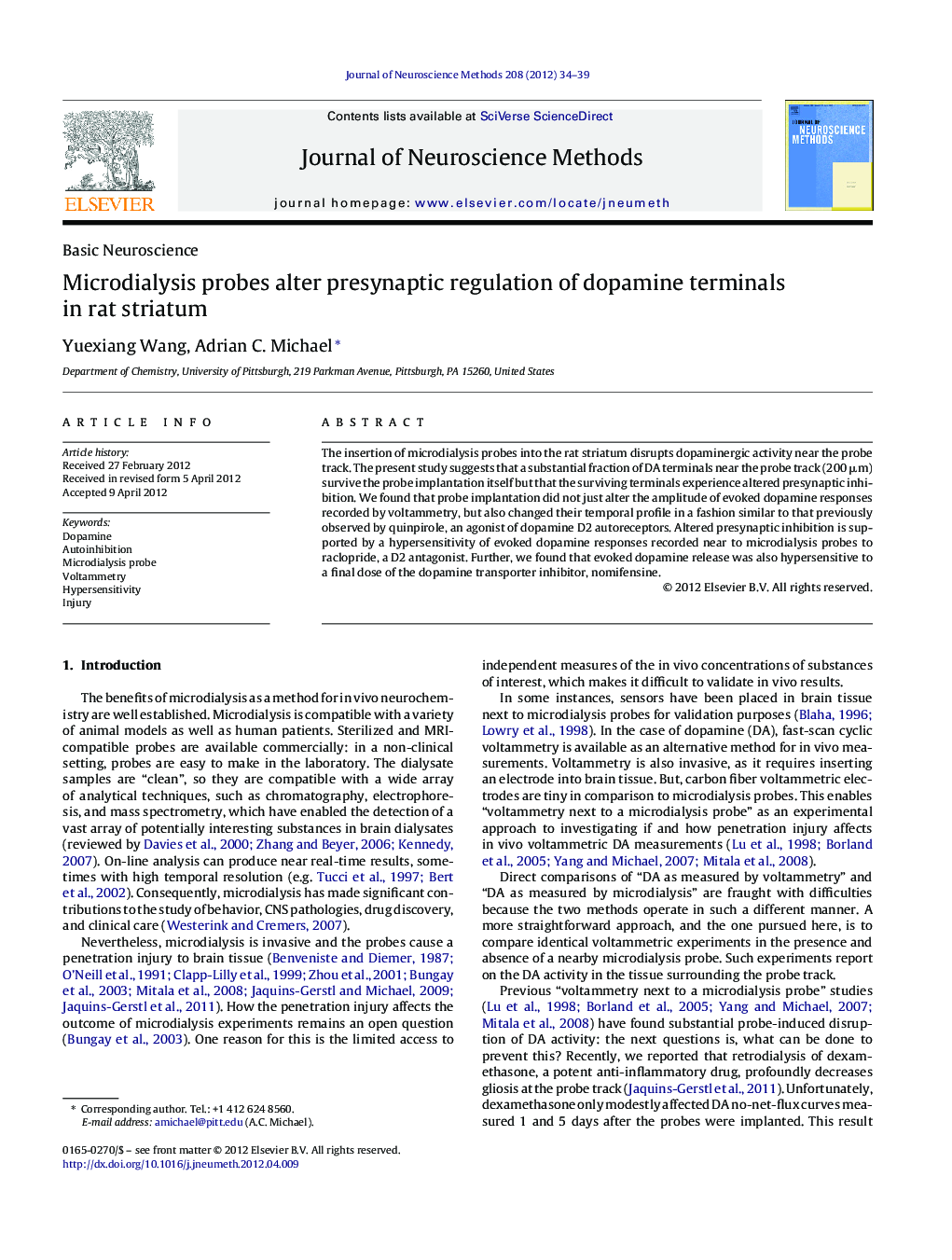| کد مقاله | کد نشریه | سال انتشار | مقاله انگلیسی | نسخه تمام متن |
|---|---|---|---|---|
| 6269235 | 1295128 | 2012 | 6 صفحه PDF | دانلود رایگان |

The insertion of microdialysis probes into the rat striatum disrupts dopaminergic activity near the probe track. The present study suggests that a substantial fraction of DA terminals near the probe track (200 μm) survive the probe implantation itself but that the surviving terminals experience altered presynaptic inhibition. We found that probe implantation did not just alter the amplitude of evoked dopamine responses recorded by voltammetry, but also changed their temporal profile in a fashion similar to that previously observed by quinpirole, an agonist of dopamine D2 autoreceptors. Altered presynaptic inhibition is supported by a hypersensitivity of evoked dopamine responses recorded near to microdialysis probes to raclopride, a D2 antagonist. Further, we found that evoked dopamine release was also hypersensitive to a final dose of the dopamine transporter inhibitor, nomifensine.
⺠Voltammetry near microdialysis probes quantifies the impact of probe implantation on striatal dopamine activity. ⺠Probe implantation causes a 90% loss of evoked DA at microelectrodes near the probe. ⺠DA near the probe is hypersensitive to raclopride and nomifensine. ⺠The loss of DA function near the probe is due to terminal loss and suppression of surviving terminals.
Journal: Journal of Neuroscience Methods - Volume 208, Issue 1, 30 June 2012, Pages 34-39